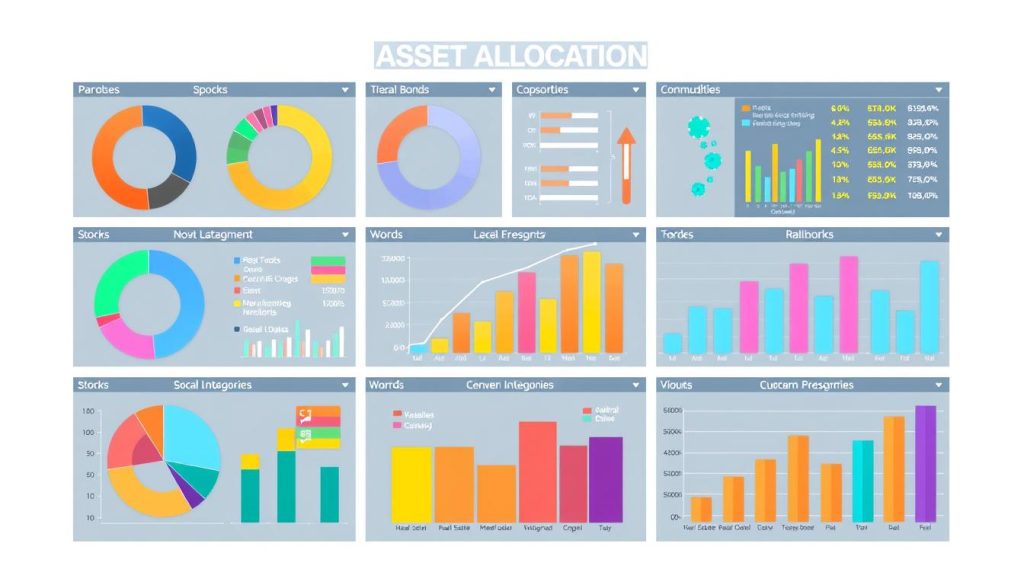In the fast-paced world of finance, investment funds are always looking for new ways to work better. Cold email outreach has become a key tool for improving due diligence. It helps fund managers get important information and make decisions faster.
Cold emails give a direct way to talk to potential investment targets. This method lets for quick sharing of information. It makes the investment decision-making process faster. With the right strategy, cold emails can reveal valuable insights that might be missed otherwise.
Investment fund due diligence often involves deep research and analysis. Cold emails add another way to collect data, alongside traditional methods. By writing thoughtful messages, fund managers can start important conversations and build relationships with key people.
Key Takeaways
- Cold emails enhance due diligence efforts for investment funds
- Direct communication speeds up the decision-making process
- Well-crafted messages can lead to valuable insights
- Cold outreach complements traditional research methods
- Building relationships with stakeholders becomes easier
Understanding the Role of Cold Emails in Investment Due Diligence
Cold emails are key in investment due diligence. They help fund managers get important info and start talks with potential investments. This makes the decision-making process smoother and opens up new chances in finance.
Defining Cold Email Outreach in Financial Context
In finance, cold email outreach means sending emails to people you don’t know yet. Fund managers send these to get first data, ask for meetings, or look into partnerships. These emails are the first step in building relationships and doing deeper analysis in finance.
Impact on Investment Decision-Making Process
Cold emails greatly affect investment choices. They give fund managers direct access to important info. This lets them quickly check out potential investments and find good ones early. It makes the due diligence process more efficient and helps make better investment decisions.
Building Professional Relationships Through Email Communication
Good cold email strategies help build professional ties in finance. By sending personalized, useful messages, fund managers can connect with leaders and partners. These connections are very helpful, offering insights, chances to work together, and a wider network in finance.
| Benefits of Cold Emails in Due Diligence | Impact on Fund Management |
|---|---|
| Direct access to information | Improved decision-making |
| Efficient opportunity assessment | Faster deal flow |
| Relationship building | Expanded professional network |
Investment Fund Due Diligence Ideas: A Comprehensive Approach
For investment funds, a detailed due diligence is key. It involves checking the portfolio’s risks and reviewing the investment strategy. Using cold email outreach helps gather important info quickly.
When doing due diligence, it’s important to look at how a fund manages risks. This means checking if the fund spreads investments well, how it handles tough times, and its risk reduction methods. Cold emails can help get these details from fund managers.
Also, reviewing a fund’s investment strategy is crucial. This means looking at past results, understanding how decisions are made, and seeing if the fund can adjust to market changes. Cold emails can be useful for deep talks on these topics.
| Due Diligence Area | Key Questions | Potential Cold Email Topics |
|---|---|---|
| Portfolio Risk Assessment | How is risk measured and managed? | Request for risk reports, VaR calculations |
| Investment Strategy Review | What’s the fund’s alpha generation process? | Inquiry about recent strategy adjustments |
| Operational Due Diligence | How are internal controls implemented? | Ask for compliance documentation |
Using cold emails in these areas makes due diligence easier and more effective. It helps investment funds make better choices and reduce risks when picking funds.
Crafting Effective Cold Email Templates for Fund Managers
Fund managers must create standout email templates to cut through the noise. Let’s dive into what makes a cold email successful for investment pros.
Subject Line Best Practices
Subject lines are key to grabbing attention. Keep them brief, around 40 characters. Use action words and create a sense of urgency. Personalize them by mentioning the recipient’s name or company.
Personalization Strategies
Personalizing your message shows you’ve done your homework. Look into the recipient’s investment interests, recent deals, or industry challenges. Mention these in your opening to catch their eye and build rapport.
Call-to-Action Optimization
A strong call-to-action (CTA) is essential. For fund managers, effective CTAs might include scheduling a call, sharing a pitch deck, or inviting them to an exclusive event. Make your CTA clear and visually appealing.
| Email Element | Best Practice | Example |
|---|---|---|
| Subject Line | Short, urgent, personalized | “[Name], 10-minute call about [Fund]?” |
| Personalization | Reference specific details | “Your recent focus on biotech investments…” |
| Call-to-Action | Clear, action-oriented | “Schedule a 15-minute intro call this week” |
By focusing on these areas, fund managers can craft email templates that grab attention, show value, and foster meaningful connections with potential investors or partners.
Leveraging Technology for Due Diligence Outreach
Investment funds are now using technology to make their outreach work easier. Digital tools help fund managers make better decisions and build stronger partnerships.
Email automation tools have changed how funds do due diligence. These tools let managers send custom messages to many people at once. This saves time and effort.
CRM systems are key for managing client data. They keep all contact info and interaction history in one place. This makes it easy for managers to find and reach out to the right people.
“Integrating email automation tools with CRM systems has transformed our due diligence process, allowing us to engage with prospects more effectively and make data-driven decisions.”
Data analytics tools give insights into what prospects like and how they behave. This helps funds tailor their outreach and get better results.
As technology for due diligence keeps getting better, funds that use it will stand out. With email automation, CRM systems, and data analytics, managers can make their outreach more focused and successful. This leads to better investments.
Performance Evaluation Metrics in Cold Email Campaigns
Measuring cold email campaign success is key for investment funds. By tracking key metrics, fund managers can make their outreach better.
Key Performance Indicators (KPIs)
Email campaign KPIs offer insights into outreach success. Important metrics include:
- Open rate: Percentage of recipients who opened the email
- Click-through rate: Percentage of recipients who clicked on links
- Reply rate: Percentage of recipients who responded to the email
- Bounce rate: Percentage of emails that were undeliverable
Response Rate Analysis
Response rate analysis shows how well cold email campaigns work. By looking at response rates, managers see what messages work best. This helps improve future outreach.
Conversion Tracking Methods
Tracking conversions is crucial for cold email campaign success. Fund managers use different methods to monitor conversions:
| Method | Description | Benefits |
|---|---|---|
| UTM parameters | Add tracking codes to email links | Measure traffic from specific campaigns |
| CRM integration | Connect email metrics to customer data | Track leads through the entire funnel |
| Landing page analytics | Monitor visitor behavior on landing pages | Evaluate engagement and conversion rates |
By using these metrics, investment funds can make their cold email campaigns better. This helps improve their outreach efforts.
Regulatory Compliance in Investment Fund Communications
Investment funds face a complex regulatory landscape when talking to clients and prospects. The SEC has clear rules for electronic communication. These rules help protect investors and keep the market fair.
SEC Guidelines for Electronic Communication
The SEC says funds must treat electronic messages as carefully as paper letters. This means keeping records of emails, social media, and instant messages. Funds need systems to save and protect these messages.

Data Protection Requirements
Keeping client data safe is vital for trust. Funds must protect information shared online. This includes using encryption and strict access controls. Following GDPR for European clients is also key.
Documentation and Record-Keeping
Keeping detailed records is crucial for compliance. Funds should log all client interactions, including cold emails. This includes:
- Date and time of communication
- Recipient information
- Content of the message
- Any attachments or linked documents
These records must be ready for SEC audits and internal checks.
Following these standards helps funds build trust and avoid legal trouble. Keeping up with SEC changes ensures smooth operations and protects the fund’s image.
Operational Due Diligence Through Email Engagement
Email strategies are a strong tool for checking out potential investments. Fund managers send out targeted emails to learn about a company’s operations and how it’s run.
They use cold emails to ask for certain documents or to understand how things work. This way, they can really get to know a company without meeting in person.
Good email strategies for checking out a company focus on important areas:
- Management structure inquiries
- Operational process details
- Risk management protocols
- Compliance procedures
By asking the right questions in their emails, fund managers can find out about a company’s good and bad points. This info is key for figuring out the risks and chances of a good investment.
Looking into how a company is governed is a big part of checking it out. Emails can help get things like board meeting minutes or policy documents. This helps understand how decisions are made and who is responsible.
To make email strategies work best for checking out a company, think about:
- Making each email fit the company and its field
- Being clear and direct to get quick answers
- Following up on unanswered questions
- Keeping a professional tone in all emails
Using these email techniques, fund managers can do a deep dive into a company’s operations. This leads to better investment choices.
Asset Allocation Analysis via Email Discovery
Cold emails are a great way for investment funds to get important info for asset allocation. By using email discovery, fund managers can learn about diversifying portfolios and find new investment chances.

Email outreach helps investors talk to experts, company leaders, and financial analysts. These talks give valuable data on market trends and risks. By asking the right questions, fund managers can improve their asset allocation plans and boost portfolio performance.
Good email discovery means sending messages that grab the recipient’s attention and get them to share their knowledge. Fund managers can use this method to:
- Check out sector-specific trends
- See how economic factors affect different assets
- Find new investment chances
- Understand how people feel about certain stocks or markets
To get the most out of email discovery for asset allocation, follow these best practices:
| Best Practice | Description | Impact on Asset Allocation |
|---|---|---|
| Personalize outreach | Make emails fit the recipient’s background and expertise | Boosts response rates and quality of insights |
| Ask specific questions | Focus on key areas for diversifying portfolios | Gives targeted info for making decisions |
| Follow up strategically | Send reminders to those who haven’t replied | Helps gather more data for analysis |
| Analyze responses systematically | Use tools to spot patterns in data | Makes asset allocation decisions more accurate |
By using email discovery, investment funds can improve their asset allocation analysis. This helps them make better decisions about diversifying portfolios. It’s a smart way to stay ahead in the fast-changing world of finance.
Measuring ROI of Cold Email Due Diligence Programs
Evaluating the return on investment (ROI) of cold email due diligence programs is key for investment funds. It helps show the value of email outreach, like saving time and money. By tracking these, funds can make their due diligence better.
Improved decision-making is a big part of ROI. Cold emails give insights into potential investments. This makes fund managers’ choices better, boosting the fund’s performance.
Building better relationships with potential investments and partners is also crucial. Cold email outreach can lead to new opportunities and collaborations. These connections are very valuable, helping with deal flow and fee structure exams.
By looking at these factors, investment funds can improve their due diligence programs. This makes cold email strategies more effective. It helps the fund perform better and keeps investors happy.
FAQ
How can cold emails improve investment fund due diligence?
Cold emails make due diligence better by getting info quickly and starting talks with potential investments. They help fund managers reach more people, ask the right questions, and build relationships without spending a lot.
What are some best practices for crafting effective cold email subject lines for fund managers?
For subject lines, keep it short, personal, and on point. Use action words, mention specific deals or connections, and skip spam words. For example, “Exclusive Investment Opportunity in [Sector]” or “Regarding Your Recent [Specific Achievement]” works well.
How can technology enhance due diligence outreach efforts?
Technology boosts outreach by making cold emails easier. CRM systems manage contacts and track interactions. Email automation personalizes and times campaigns. Data analytics shows how well emails perform. These tools make due diligence more efficient and effective.
What are key performance indicators (KPIs) for measuring cold email campaign success in investment fund due diligence?
Key KPIs include open rates, response rates, and click-through rates. Also, look at conversion rates, like meetings or info received. Track time-to-response and follow-up engagement for deeper insights.
How can fund managers ensure regulatory compliance in their cold email outreach?
Fund managers must follow SEC rules for emails, protect data, and keep records. Get email marketing permissions, offer clear opt-outs, and make sure claims are true. Store all emails and responses safely.
How can cold emails be used for operational due diligence?
Cold emails help with operational due diligence by asking about a company’s processes and management. Targeted questions reveal internal controls, risk management, and operational efficiency. This helps spot potential issues before investing.
What strategies can be used for asset allocation analysis via email discovery?
For asset allocation analysis, send questionnaires on investment strategies and portfolio details. Ask about future plans and market outlooks. This data helps assess diversification and find optimization opportunities.
How can the ROI of cold email due diligence programs be measured?
To measure ROI, count tangible and intangible benefits. Tangible benefits include cost savings, more deals, and better investment results. Intangible benefits include better relationships and market insights. Compare these to the costs of the program to find ROI.
What are some effective personalization strategies for cold emails in investment fund due diligence?
Personalize by mentioning recent news or achievements, mutual connections, or shared interests. Tailor content to the recipient’s investment strategy or sector. Use their name and company name, and show you know their business challenges or opportunities.
How can fund managers use cold emails to conduct fee structure examinations?
Use cold emails to ask about management and performance fees. Request fee breakdowns, ask about caps or hurdle rates, and check historical fee changes. This helps compare fees and negotiate better terms.


